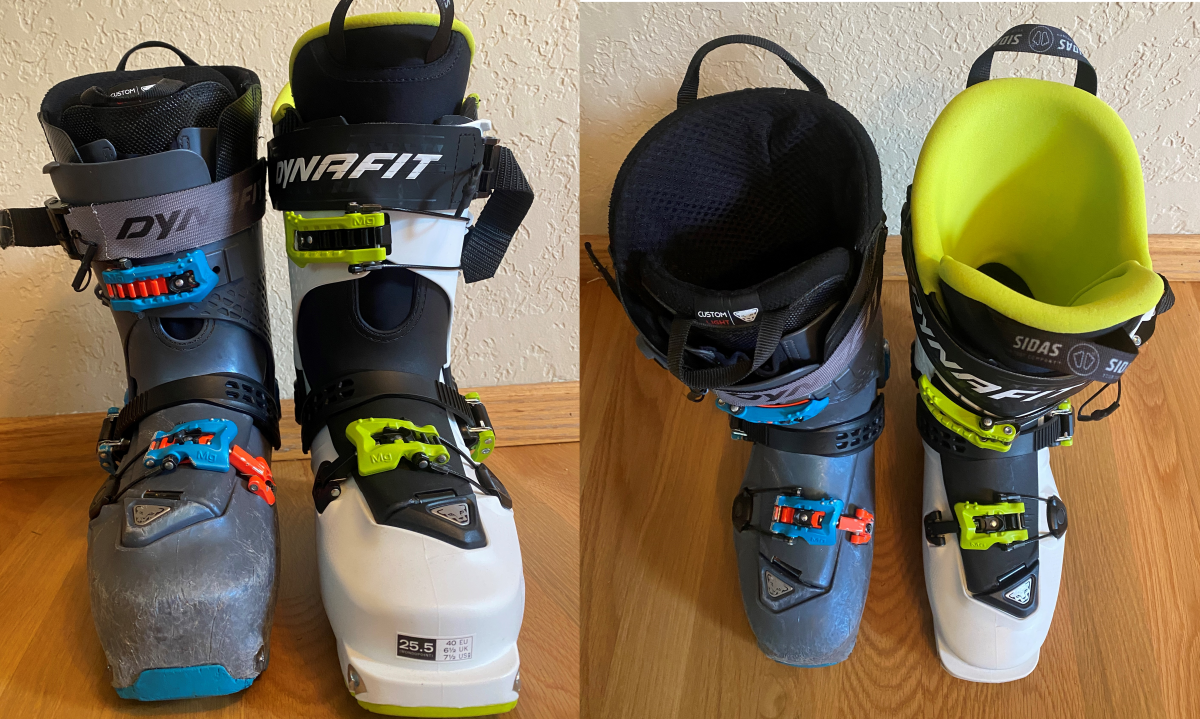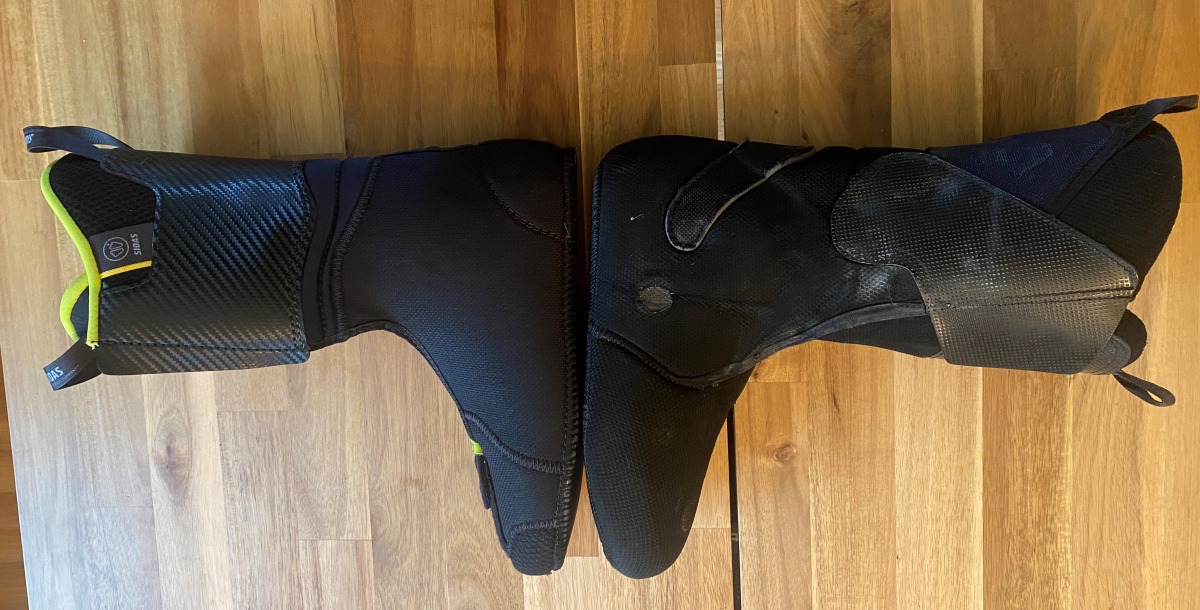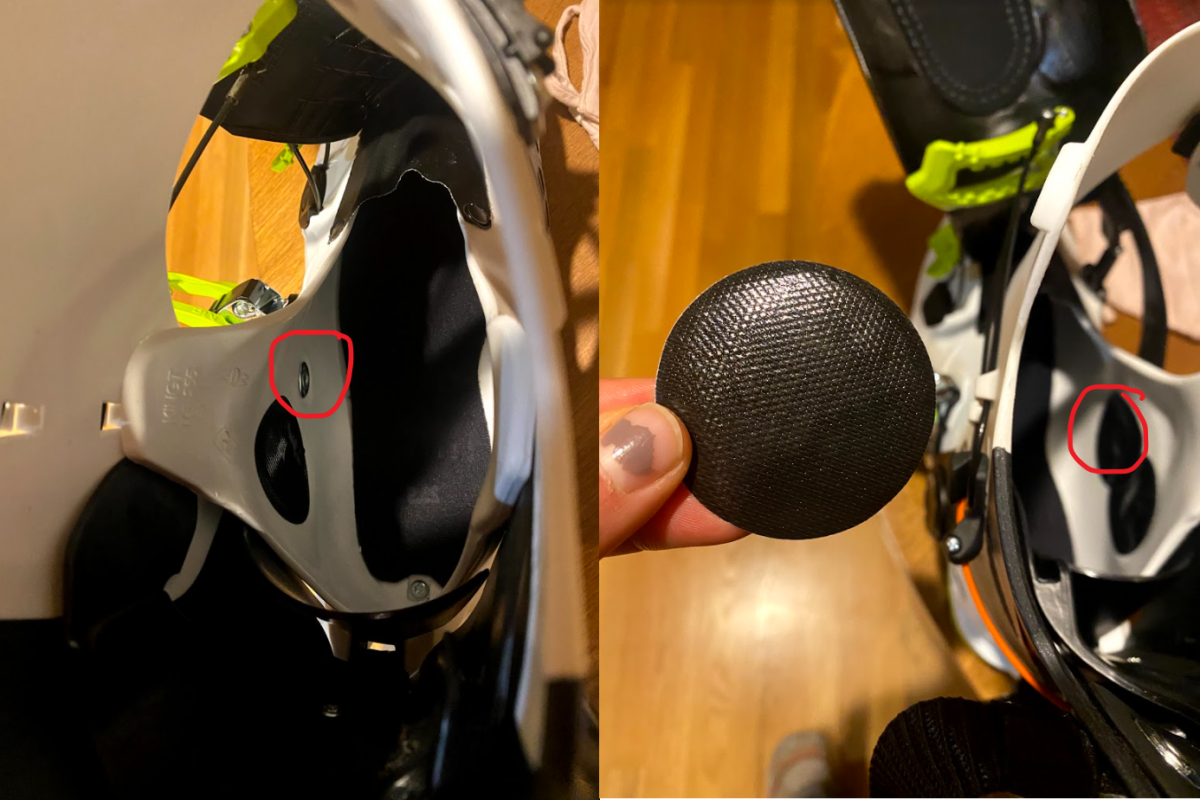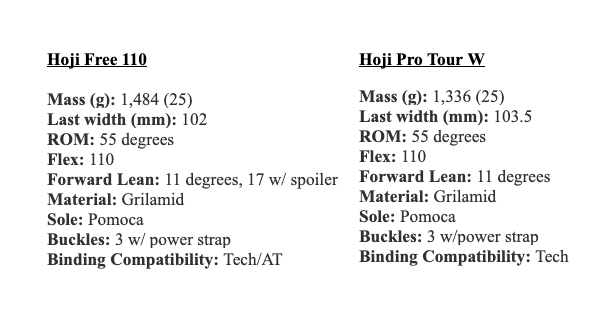My feet have a wide forefoot (4 inches or 10.2 cm across), a small bunion on the side, a sixth toe bump on the other and a semi-high arch. Finding ski boots that fit my foot and ski well has become sort of a scavenger hunt adventure for me. Am I the only one who goes to ski shops to try different boots looking for that magic cinderella slipper? I have been doing that a lot less these days, given the pandemic, but also because I think I have finally found my current version of that mystical slipper.
In Lou’s Hoji identical twins, he outlined a deeper dive for Hoji Pro vs Hoji Free (130 flex). This post will provide a first look into the difference between the Hoji Free (110 flex) and the Women’s Hoji Pro Tour (also 110 Flex).
Prior to switching to the Dynafit Hoji Pro Tour, I spent six years skiing in Scarpa Gea RS. I loved the Scarpas but it was time for a change. One main drawback of the Scarpas was their ski-walk mechanism which commonly would get constricted with snow. Looking through other options, I was very intrigued by the Hoji walk/ski mode system, which is what led me to the Dynafit Hoji Pro Tour. I was psyched on the 103.5 mm last! Only a few (or many) trips to the ski shop for small punches and my feet felt the happiest they have ever been.
I have skied on the Hoji Pro Tour for the past two seasons. Spring season last year didn’t really happen for me because of Covid, and this year I have a different, lighter pair of boots for spring, so I have primarily skied on the Hojis mid winter. I have been a bit disappointed with durability given how expensive the pricing is — my liner basically disintegrated after 30 days of skiing, half of my buckles are on the verge of breaking and the boots themselves look really beat up; and I haven’t even touched any cascade choss…yet. The best thing about them: they ski and walk like a dream. Even given my moody feet, in the winter I have had little to no problems with foot discomfort while walking or skiing. Compared to the Gea flex, I found the Pro Tour flex more progressive.
I am excited to now get to try the Hoji Free this coming winter season. I expect that most of the things I have loved about Pro Tour will transfer into the Free. I am also hoping that Frees will hold a higher durability bar. Below find the first look differences I have found that make them stand out from the Pro Tour.
The liners between the two boots are drastically different. Free uses a Sidas branded liner that is dense, has an adjustable tongue held on by velcro (not quite sure if this is a feature I’ll ever use), therefore helping reinforce the stiffness of the boot. The good news is, in case you don’t like it, there is always an option to swap any liner that you like! Both liners are heat moldable.
Side by side view of the boots (Pro Tour in grey and Free in white), already with a punch in the sixth toe area. Pro Tour features my least favorite ski boot feature ever: the shark nose. If you like getting creative like Louie and I, fun ideas emerge but I didn’t otherwise find the feature useful for much more than that. Thankfully the Free offers the standard boot toe we all know and love, compatible with frame bindings and automatic crampons.
Both the shell, as well as the liner in the Free model are a bit taller height-wise, creating the boot geometry that should feel more forward. Given the burlier liner in the Free, this also should, in theory, yield in more stiffness.
I found it curious that the Free has a slightly smaller last (102mm) but thinking more about it, it makes sense that a freeride touring boot would offer a bit less room compared to a true touring boot. When it came to overall fit, I didn’t feel any immediate big differences, even given the slightly smaller last in the Free model. I expect this to change as I ski on the boots more.
If you look closer at my liner comparison photo, you’ll notice a circular wear on my old liner. This was caused by my ignorance of not properly preparing my boot prior to use. This time around I learned that the black circle stickers provided in the box help protect the boot hardware from rusting and the liner from wear. Ensure those are installed when the boot is dry before and after for at least 24 hours.
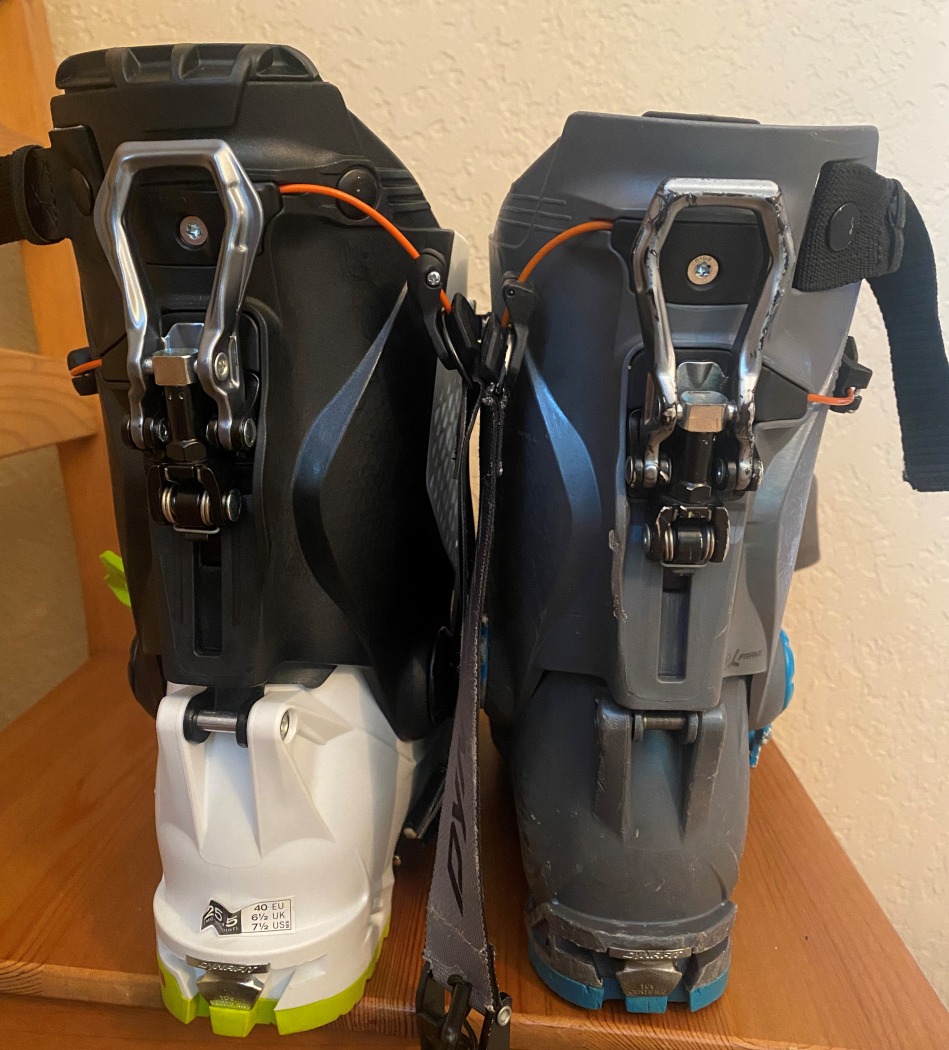
Rear view of the Hoji Free 110 (left) and Pro Tour (right). Both use the coveted Hoji Lock ski/walk system.
Hoji Free come in just a bit heavier than Pro Tours. I am not yet able to feel the weight difference, but I am curious how this will manifest in longer ski tours. Both boots I have are size 25.5. A single boot shell without a liner for Pro Tour measure at 1126 g (plus liner at 210 g), while the Free shell is 1214 g (270 g liner).
Hoji Pro Tour BSL for 25.5 size measure at 281 mm BSL while Free is 290 mm. The difference is caused mainly by the shark nose, and something to keep in mind when switching since you may need a remount depending on your ski setup.
It is ironic to say I can’t wait for winter, when we are right on the cusp of summer season? I guess I will remain forever seasonally confused and try to enjoy that elusive PNW sun.
Shop for the Hoji Free 110 and Pro Tour
WildSnow Girl, Julia Dubinina, is a weekend warrior chasing snow in winter and sun in summer. A lover of long tours and steep skin tracks, she explores the Pacific Northwest and beyond. When she is not out adventuring, she is working away at her corporate desk job for a software company to make her next adventure happen.

